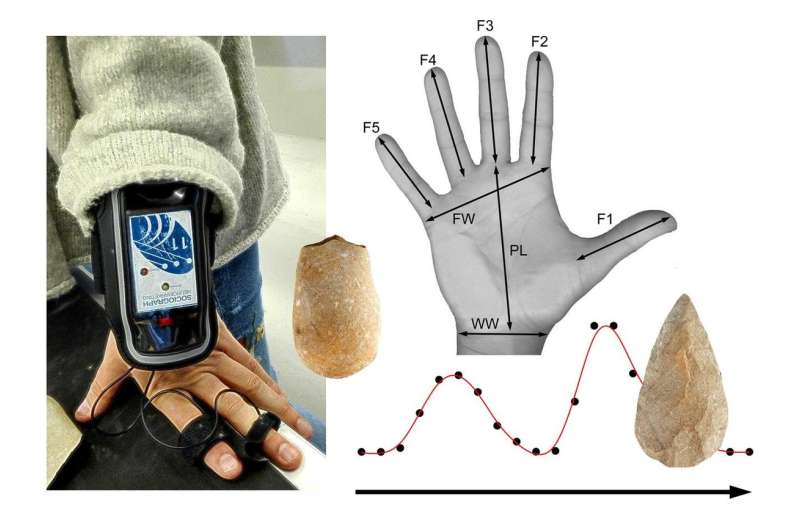Credit: CENIEH
The Paleoneurobiology group of the Centro Nacional de Investigación sobre la Evolución Humana (CENIEH) has published a methodological study in the journal Progress in Brain Research in which neuromarketing techniques were used for the first time to analyze the relationship between the hand and the use of stone tools, and the cognitive functions associated to the sensory and exploratory process of manipulation, in addition to the spatial relationship between hand and object.
Neuromarketing uses variations in electrodermal activity to detect fluctuations in the emotional and attentional state of subjects in response to commercial stimuli. By applying this technique, and following an analysis of hand morphological variation in our species, the authors have analyzed the changes in the electrodermal response of the body during manipulation, in the Oldowan and Acheulean industries.
"We observe different individual responses when it comes to handling different tools, as well as gender differences," says Emiliano Bruner, lead author of this paper, titled "Cognitive archaeology, body cognition, and hand-tool interaction," which highlights the importance of body and technology as integral parts of the same cognitive process.
In this paper, analysis of electrodermal activity is proposed as a new tool for neuroarchaeological research. An extensive review is also presented of the evidence from paleoanthropology and archaeology for how the parietal cortex in the brain and visuospatial capacities have evolved in the human genus.
More information: Cognitive archeology, body cognition, and hand–tool interaction. Progr Brain Res, doi.org/10.1016/bs.pbr.2018.06.013
Provided by CENIEH























